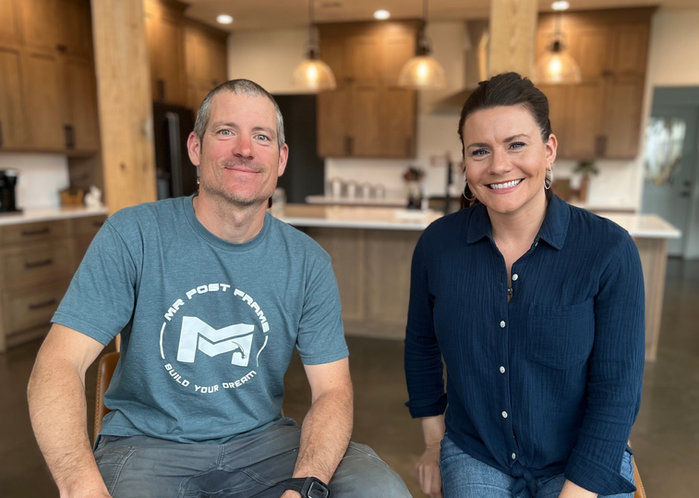Roof Metal | Is $elf Building Worth It? | Ep 10
- MR Post Frame
- May 20, 2024
- 2 min read
Alright, welcome back to our series, “Is Self Building Worth It?” Today's post is going to be about me putting metal roofing on by myself. There's a lot to cover, but before we dive in, a couple of things to mention. If you're interested in designing a barndominium, our full design service, Back 40 Buildings, can assist you. We offer various framing options and stock plans that we're constantly improving. Additionally, we have a Patreon group focused on DIY building and contracting, which provides exclusive resources and community interaction. Now, let's get started.

I vividly remember the day that I began putting our metal roofing on. Although I wasn't particularly afraid, there are several concerns about the process I took and safety concerns to address. When putting metal roofing on your roof, it's essential to consider condensation issues, especially in colder climates. While OSB sheathing provides structural support, it can lead to condensation buildup underneath the steel, potentially causing issues like frost formation. Drip stop is a solution, but OSB adds structural strength and prevents visible purlin lines. You do need the OSB to have something to screw into when it comes to chimneys and such.
Moreover, considering the fluctuating lumber prices, using OSB versus drip stop can impact your budget significantly. Furthermore, proper equipment like cougar paws and a tele handler make the process smoother and safer. However, safety remains paramount, especially when working alone on a roof. A safety harness is crucial, and attention to weather conditions is essential to prevent accidents or material loss due to wind.

When it comes to installing steel, whether to screw into the flats or ribs remains a common debate. While both methods have their merits, screwing into the flats ensures a better seal and contact with the wood. Additionally, proper trims and detailing around windows are critical, often proving to be the most challenging aspect of the build.
It's also crucial to consider ventilation and insulation options early in the process to avoid complications later on. Vented soffits, proper house wrapping, and attention to framing details contribute to a successful build. However, even with careful planning, DIY builders may encounter challenges, especially with trim work and framing precision.

In conclusion, while self-building offers control and potential cost savings, it requires attention to detail, safety precautions, and a willingness to learn and adapt. By investing in quality tools, seeking expert advice, and embracing a methodical approach, DIY builders can navigate the complexities of construction more effectively.
As always, we appreciate your support, and stay tuned for more updates on our building journey and more posts about this series. We hope you find this information useful. W e hope that y sharing our story, you are able to avoid some of the mistakes that we made.
Thank you,
MR Post Frame

Patreon Group:
Interested in tackling your build on your own? If you want to explore the possibility of being your GC or self-building, our Patreon membership is for you! It's a community of like-minded people offering support, discounts, Q/A, and more.